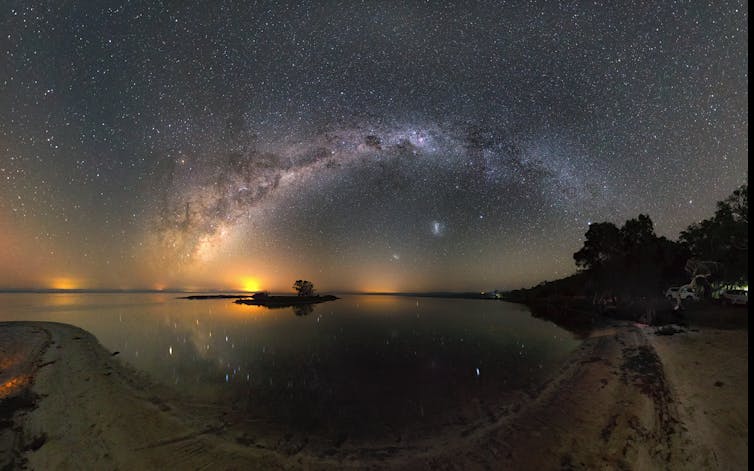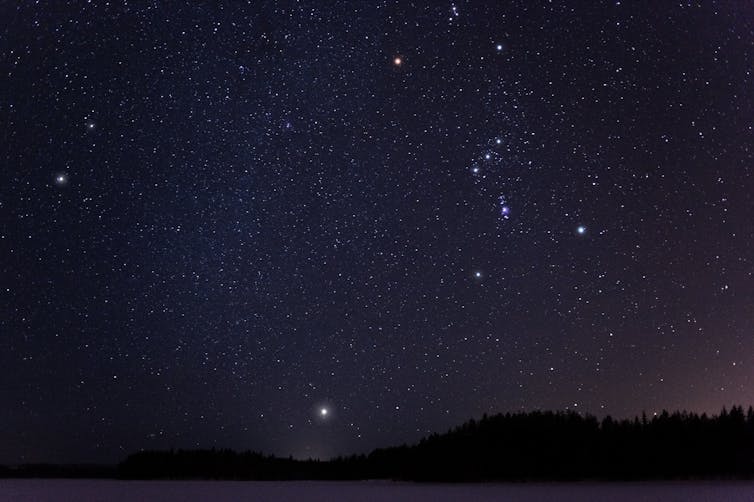by SIMON CROPPER, CHARLES KEMP, DANIEL R. LITTLE, & DUANE W. HAMACHER

Almost every person throughout the existence of humankind has looked up at the night sky and seen more than just a random scattering of light. Constellations of stars have helped us shape our own ongoing narratives and cultures – creating meaning in the sky above that guides us in our life on the ground below.
Of course, we don’t all see exactly the same night sky – there are subtle differences depending on where we are on the planet, what season it is, and the time of night, all of which are imbued into the meaning we construct about the stars.
But around the world and throughout history, we find remarkably similar constellations defined by disparate cultures, as well as strikingly similar narratives describing the relationships between them.
For example, the constellation Orion is described by the Ancient Greeks as a man pursuing the seven sisters of the Pleiades star cluster.
This same constellation is Baiame in Wiradjuri traditions: a man pursuing the Mulayndynang (Pleiades star cluster).
In the traditions of the Great Victoria Desert, Orion is Nyeeruna, a man chasing the seven Yugarilya sisters.

These and other common patterns, as well as the remarkably complex narratives describing them, link the cultures of early Aboriginal Australians and the ancient Greeks, despite them being separated by thousands of years and miles.
Similarly, many cultures in the southern hemisphere identify constellations that are actually made of the dark spaces between the stars, highlighting absence rather than presence. These feature predominantly in the dark dust lanes of the Milky Way.
Across cultures, these again show remarkable consistency. The celestial emu, which is found in Aboriginal traditions across Australia, shares nearly identical views and traditions with the Tupi people of Brazil and Bolivia, who see it as a celestial rhea, another large flightless bird.
Significant differences too
There are also significant differences seen between cultures, although the fundamental roots remain.
The Big Dipper is identified across many northern hemisphere traditions, but for the Alaskan Gwich’in this is merely the tail of the whole-sky constellation Yahdii (The Tailed Man), who “walks” from east to west overnight.
Although we share a fascination with the stars, we have little documented knowledge of how particular constellations were identified by certain cultures. Why and how do we see the same patterns?
Cosmos for more
